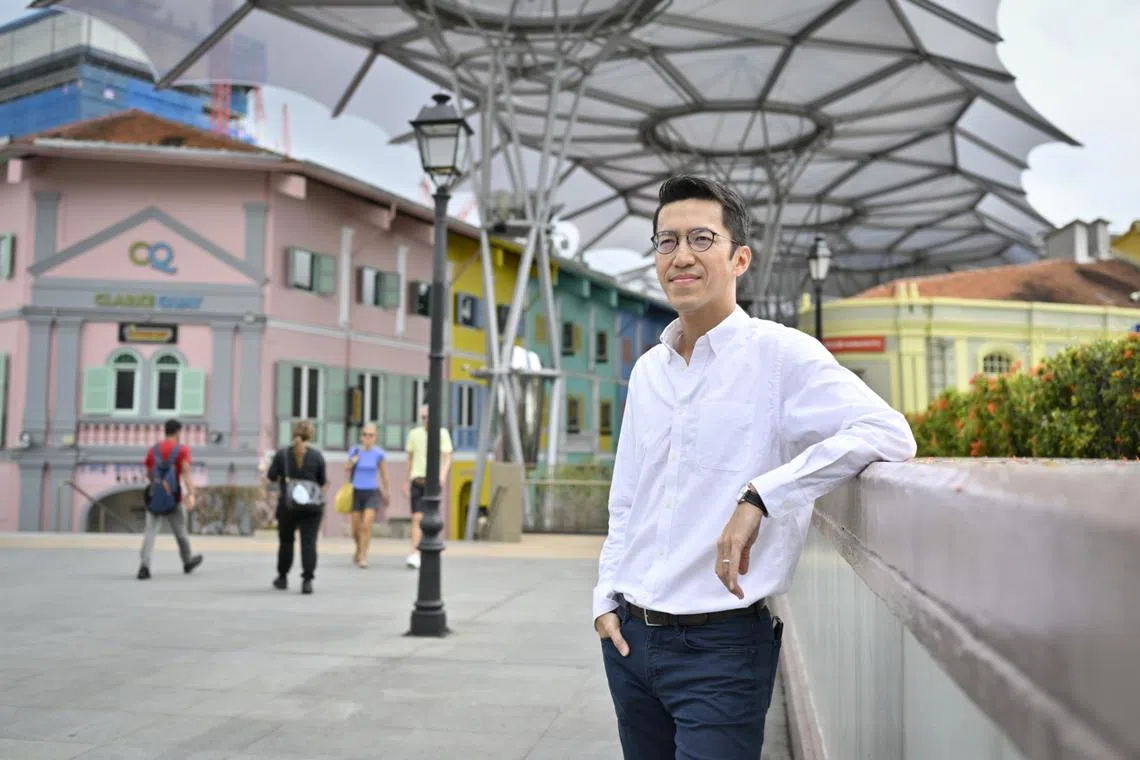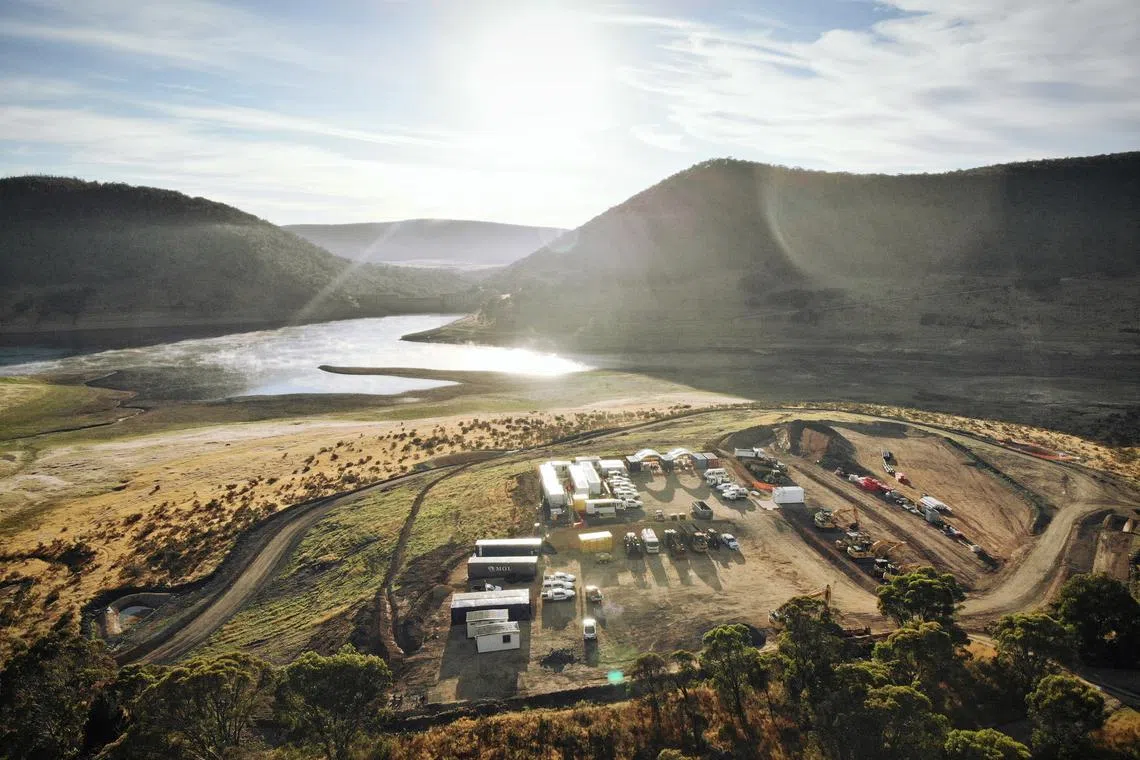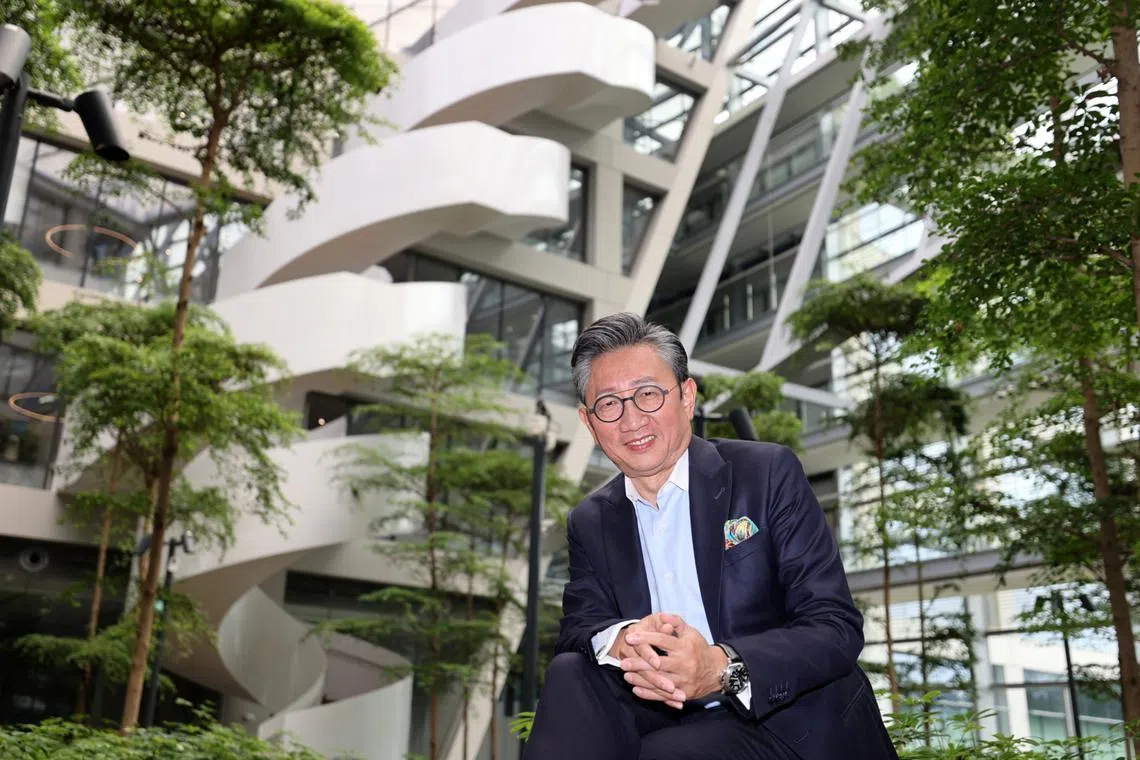Grow greener: Home-grown firm expands urban design expertise to over 40 countries
It has helped design over a million homes in Singapore. Now, it’s helping to create urban spaces that are smarter and greener around the world
You step out for lunch. The heat and humidity hit you immediately.
Within minutes, your skin is sticky, your shirt clings to your back and you long for the cool embrace of air-conditioning.
Scientists estimate that Singapore endured 122 extra days of dangerous heat in 2024 due to climate change. These are defined as days when the mean temperatures were higher than the warmest 10 per cent of readings from 1991 to 2020.
Compounding this is the urban heat island effect, says Mr Henry Woon, director of Environment, Buildings + Cities, at Surbana Jurong Group (SJ).
Headquartered in Singapore and wholly owned by investment company Temasek, SJ is a global consultancy specialising in urban development, infrastructure and managed services, with offices in more than 40 countries.
It brings together 10 global member brands to design and develop smarter, more sustainable solutions for the future.
Speaking to The Straits Times along the Read Bridge in Clarke Quay, Mr Woon explains that the urban heat island effect is a phenomenon where cities tend to be hotter than rural areas.
“It is more pronounced in areas that are densely built-up and lack sufficient greenery and wind flow,” says the 44-year-old, who has over 20 years of experience in environmental and sustainable design.
Familiar urban materials such as concrete, glass and steel are key contributors, Mr Woon explains. They trap heat and raise temperatures in the surroundings.
So what can we do? Use the art and the science of design to create cooler, smarter, and friendlier urban spaces, he says.
Expanding expertise
Surbana Jurong Group (SJ) has helped shape Singapore’s housing and industrial landscapes, including designing over a million homes.
The company has broadened its global reach and expertise in recent years – especially in sustainability. One ongoing project: Exploring ways to protect Singapore’s coastline from rising sea levels.
A key driver of this transformation was Temasek’s investment in 2015.
“Cities are increasingly integrating smart technologies, sustainable materials and resilient urban design into their built environments,” says Mr Russell Tham, head of Emerging Technologies, Temasek, and former board member of SJ.
The Singapore-headquartered investment firm saw growing opportunities in the urban development sector, he adds.
“As an active shareholder, we (Temasek) are committed to engaging our portfolio companies, such as SJ, on their growth strategies to create sustained long-term value.”
For SJ, this has meant strategic investments to accelerate expansion, including the acquisition of 10 companies to offer a wider range of sustainable solutions, says Mr Tham.
Mr Sean Chiao, group chief executive officer of SJ, adds: “Temasek’s support has been crucial in fuelling our growth, by bringing together companies who are leaders in their respective fields, to form a collective of problem solvers.”
Today, SJ operates in over 40 countries and employs 16,000 globally. Its annual revenue has surged from $400 million in 2015 to $2.3 billion in 2024, with 7,000 active projects worldwide.
Designing comfort
Stepping under the shade of the iconic CQ @ Clarke Quay canopies, Mr Woon points out how the temperature immediately feels about 2.5 deg C cooler – even though the actual temperature hasn’t changed.

The canopies are made from a lightweight, transparent plastic membrane called ethylene tetrafluoroethylene (ETFE). The ETFE material enables the canopies to reduce solar heat gain by more than 60 per cent, says Mr Woon, improving comfort during the day.
The goal of the CQ @ Clarke Quay rejuvenation project – completed in 2024 as part of a $62 million asset enhancement initiative by CapitaLand Integrated Commercial Trust – was to make the precinct more conducive for daytime activities.
Mr Woon, who contributed to the project, shares how SJ uses environmental design elements to improve urban spaces and buildings.
- Cooler
The new ETFE canopies at CQ @ Clarke Quay reduce the surface temperature of the concrete floors from over 40 to around 32 deg C at mid-day, says Mr Woon.
This same material is used to shelter the indoor gardens at SJ’s headquarters, located within CleanTech Park at Jurong Innovation District, keeping temperatures down while allowing natural light to filter through.
- Smarter
For CQ @ Clarke Quay, SJ designed a customised misting fan system that provides an evaporative cooling effect to the surrounding food and beverage zones.
This new fan design reduces energy consumption by about 50 per cent compared with the original fan system, he says, and helps lower the environmental temperature in the surrounding area by about 2 deg C.
- Greener
Situated between Fort Canning and the Singapore River, CQ @ Clarke Quay “has open spaces in all directions, allowing for natural ventilation”, says Mr Woon.
The team worked with CQ @ Clarke Quay’s unique location to create a comfortable outdoor environment without relying on energy-intensive cooling. The enhanced natural ventilation, combined with the customised misting fans, helps counter the urban heat island effect by preventing heat from accumulating in the surrounding street area, he adds.
SJ applied this same approach – of integrating a building with its natural surroundings – to one of its latest projects: Mandai Rainforest Resort.
Nestled within the lush Mandai Wildlife Reserve, the resort was designed with nature-based principles. It was carefully built around existing trees in the area to preserve them, while maximising natural ventilation and shading.
Building better
Surbana Jurong Group (SJ) has over 120 offices in more than 40 countries across its 10 global member brands. Here’s how it’s helping to shape more sustainable and resilient cities.

- Snowy 2.0, Australia: The pumped-hydro project will deliver 2,000 megawatts of on-demand renewable power and about 350,000-megawatt-hours of large-scale energy storage, helping to stabilise Australia’s electricity supply.
- Sarawak Energy Transition Masterplan, Malaysia: The project aims to cut greenhouse gas emissions in Sarawak and drive sustainable economic growth through renewable energy resources like hydropower, and low-carbon fuels such as hydrogen and ammonia.
- Google London King’s Cross, United Kingdom: Google’s London headquarters integrates green roofs, energy-efficient lighting and natural ventilation to reduce its environmental impact and improve employee well-being.
- Kigali City Master Plan, Rwanda: This urban development blueprint aims to transform Rwanda’s capital into a modern financial hub while addressing residents’ needs through affordable housing, transport and infrastructure services.
- King Abdulaziz International Airport (KAIA), Saudi Arabia: As the project management consultant, SJ helped KAIA expand capacity and enhance traveller experiences, especially for the millions of pilgrims transiting through the airport annually during haj and Umrah.
For people and planet, a positive impact
Over half of the global population (55 per cent) currently resides in urban areas, according to data from the United Nations (UN). This figure is projected to reach 70 per cent by 2050.
But every building carries an environmental cost.
Already, the built environment is responsible for 37 per cent of global energy-related emissions, says a 2023 UN Environment Programme study.
As part of the World Green Building Council’s Net Zero Carbon Building Commitment, SJ has pledged to develop and implement a decarbonisation roadmap. This will outline key actions and milestones to achieve carbon-neutral operations by 2030.
Carbon neutral means that any carbon emissions released into the atmosphere is balanced by an equivalent amount being removed.
But is reducing or offsetting carbon emissions enough?
No, says SJ’s Mr Woon. “For those of us shaping urban spaces, our responsibility shouldn’t stop at just minimising impact,” he adds, introducing the concept of regenerative design in the built environment.
Regenerative design goes beyond sustainability, Mr Woon explains, by moving away from doing less harm to creating a “net-positive impact”.
It is about designing spaces that are better for the planet and people, he adds, enhancing the well-being of those who use it.

“We’re driving towards a regenerative future,” says Mr Sean Chiao, group chief executive officer of SJ. “Beyond carbon reduction, we’re committed to shaping cities and buildings that regenerate, not just sustain, in the long term.”
The transformation of CQ @ Clarke Quay, which reimagined the precinct for daytime use and integrated the space with its natural surroundings, reflects this vision.
The goal wasn’t to change CQ @ Clarke Quay’s identity but to breathe new life into it, says Mr Woon. It’s an approach that embodies SJ’s mission – designing urban spaces that create a positive impact for people and the planet.
“The growth of Temasek’s portfolio companies from local to regional and global leaders reflects Singapore’s pioneering spirit and its DNA of determination, innovation and vision.
“As an active shareholder, Temasek engages them to enhance shareholder value as they grow their competitive edge and generate sustainable long-term returns, while fostering meaningful change for people and communities – so every generation prospers.”
– Mr Dilhan Pillay Sandrasegara, executive director and chief executive officer, Temasek
Our Singapore DNA, a series in partnership with Temasek, spotlights how home-grown companies in its portfolio have grown into regional and global leaders. It also explores how Temasek has partnered them throughout their journeys.
This was first published in The Straits Times.
Decoding Asia newsletter: your guide to navigating Asia in a new global order. Sign up here to get Decoding Asia newsletter. Delivered to your inbox. Free.
Copyright SPH Media. All rights reserved.
